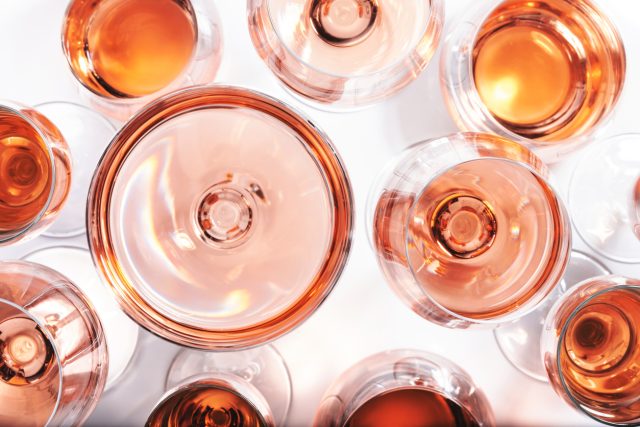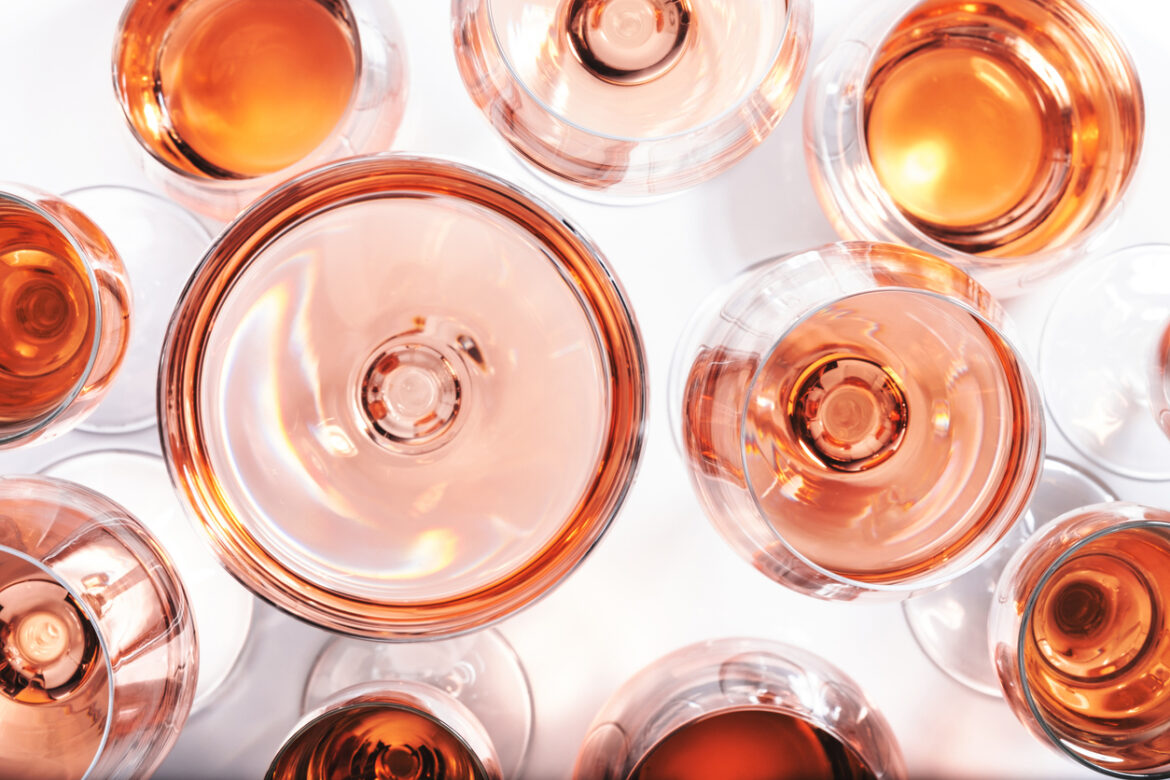Rosé may no longer be the booming juggernaut it once was, but its evolution from trend to trusted category reveals a more resilient and refined market. Provence, in particular, is emerging as the new gold standard for pink wine lovers, writes Kathleen Willcox.

When it comes to gains, it’s all relative. Incredible growth spurts can make slow but steady advancements seem boring, perhaps even alarming in comparison. Anyone who has watched a child spurt up six inches one year, and then suddenly notice the surge level off, knows that (irrational) sense of alarm well.
It appears that something similar may be happening in the rosé wine market.
Rosé sales grew like middle schoolers on steady diets of grass-fed steak and whole milk in the first decades of the new millennium, with global consumption of the pink elixir rising 17% globally between 2000 and 2023, according to the International Organisation of Vine and Wine (OIV). By comparison, recent receipts seem tepid.
But in comparison to wine overall, which has been in a state of alarming decline for a few years (production was down -4.8% last year and consumption was down -3.3%, per the OIV), rosé as a category should be seen as a reliable wine. Take a look at France, the OG homeland and biggest consumer of rosé. While the value of French wine exports slumped -3% last year, according to the French wine and spirits export agency FEVS, exports of rosé from Provence were up 4%.
The rosé market has matured considerably in recent decades, and the slowdown in wild growth is seen by some, perhaps counterintuitively, as a sign of strength.
“When the boom in sales happened, there was a sharp decline in red wine sales, so many winemakers adapted, which is understandable,” says Annabelle Sumeire, export director at Provence’s Chateau Coussin-Famille Sumeire. “Many rosé wines were made from grapes that were perhaps unconventional for Provence, and it brought in a lot of rosés from all over the world. Yes, it flooded the market with wines at lower price points, but it also established rosé as a category, not a trend.”
Now, Sumeire argues, consumers have options. Tyler Balliet, co-founder and CEO of New York’s Rosé Mansion and author of Rebel School of Wine, agrees.
“Rosé is definitely not a trend, it’s a new product category,” Balliet says. “In the last year, the explosive growth may have tapered off, but now I can get it year-round, by the glass, in a restaurant anywhere. Yes, some winemakers cashed in on what they saw as a trend, but there is a huge opportunity for premium producers and winemakers who want to serve growing markets that wine culture has traditionally ignored.”
Leaning into Provence + intentionality
Producers across Provence are underlining their history as purveyors of peerless French charm, and many are finding that the market is snapping up what they’re selling.
“Of course, we lean into Provence,” says Francois Matton, CEO of Chateau Minuty in Provence. “Every tasting event and digital campaign radiates the French Riviera charm. Provence is more and more recognised by consumers as the best area to produce rosé due to its soil, climate, the influence of the Mediterranean Sea and years of experience. Côte de Provence rosé is what Champagne is for sparkling wines.”
In May of this year, Provence further cemented its reputation as the world’s premium source for rosé by acquiring Cru status for one of its regions: Sainte-Victoire. Until then, the region was one of five Dénominations Géographiques Complémentaires (DGC) in the Côtes de Provence.
“The new Cru appellation is a game changer for the 400 growers who came together to make this happen,” Sumeire says. “My husband, Olivier, who has presided over the Sainte-Victoire Vintners’ League, has led this initiative for more than a decade. We’re deeply convinced of the positive, long-term impact this recognition will have, not just for producers, but for the identity and visibility of the region.”
Beyond Provence
Other non-Provence French rosé producers are also seeing strong growth and room for innovation, with a purpose.
“The growth of the rosé category is a huge positive,” says Michael Misiorski, CEO of Hampton Water, which is produced in the Languedoc region in partnership with Gérard Bertrand. “The expansion encouraged innovation and brought new audiences into the world of rosé.”
And while Misiorski says they shipped more than 100,000 cases last year, up 20,000 from the year prior, Jesse Bongiovi, Hampton Water’s co-founder (along with his rocker father, Jon Bon Jovi) says they never launch new SKUs “just to have more.”
“Each one has to feel right,” Bongiovi says. “We believe rosé is for anyone, which is why we wanted to diversify from still rosé into the sparkling category to offer consumers a reason to celebrate everyday occasions. We just launched an Artist Series, which is about honouring our roots in art, music, and creativity. It’s been amazing to see that collectors and longtime fans are just as excited as first-time buyers.”
After what Misiorski calls their strongest year-over-year growth in global case sales in 2024, they’re projecting double-digit growth in 2025, thanks to expanded retail placement and international growth.
For importers, rosé is a consistent seller, even as other categories flatline. At the New York-based importer Cape Classics, COO Matthew Dennie notes that sales of their French rosés are up about 11%. One of our producers, Souleil Wines, which has a great story, beautiful packaging and produces a great product, grew 120% last year.”
“Rosé performs much better than the rest of our portfolio,” Dennie says.
Celebrating diversity
Rosé from Provence has reached ultra-premium status in the minds of many consumers, Dennie argues. This allows for well-made rosés, from places and grapes one might not associate with rosé, with plenty of room to shine at a variety of price points. Dennie to several South African rosés in his portfolio as sales drivers, right alongside their French counterparts.
Others agree that rosés in a range of styles and sweetness levels are selling well, and managing to reach wine lovers that many in the industry neglect.
“I find that traditionally, the wine industry caters to white men,” says Balliet. “Purely from a capitalistic perspective, that’s foolish. When I hosted my Wine Riot Festival, and the Rosé Mansion, where we sold 225,000 tickets in 12 months, the audience was 86% at Wine Riot and 98% women at the Mansion. About 50-60% of the ticket-buyers at the Mansion were people of colour.”
Balliet found that by appealing broadly to a range of people and palates, the Mansion consistently snagged sell-out crowds.
“This is a giant audience, and it’s exciting to see more brands address it,” Balliet says.
Tradition v modernity
At SMAK Wines in Walla Walla, the 2,000-case winery produces rosé for year-round consumption, releasing SKUs that are tailor-made for each season.
“While traditional regions for rosé still have a lot of pull, consumers are also more open-minded and willing to try new things and visit new regions,” founder Fiona S. Mak says. “Most red-skinned grapes are potentially suitable for rosé except those that can have a high pH, like Malbec or Tempranillo.”
SMAK’s rosés are as divergent as the seasons: the summer is made with Pinot Gris, made via direct press.
“They are very tropical fruit driven when freshly bottled, and then it evolves into the classic peach, melon and honey notes,” Mak says. “The winter is a bubbly for all celebration needs, and it’s an even split GSM blend, force-carbonated at bottling.”
At Maison Mirabeau in Provence, founder Stephen Cronk is also embracing less-traditional styles.
“We are always working on new product development, and we recently launched a lower ABV Rosé Spritz, in partnership with Fever-Tree,” Cronk says. “We are conscious about not spreading ourselves too finely, but equally, it’s very important to stay relevant and to respond to consumer behaviour.”
Cronk’s broad approach will always include an embrace of rosés roots, though.
“Like Champagne versus sparkling wines, Provence remains the undisputed benchmark for rosé wine, and I think it will stand the test of time,” Cronk says. “We see more interest and our high-end cuvées, and those that have particular production methods, like our regenerative wines.”
Currently, Cronk is projecting 25% growth this year. Not every rosé brand is projecting, or will achieve, double-digit growth this year. But the future sure looks rosé.
Related news
Rosé on the grid: Whispering Angel expands F1 presence
An introduction to Valtènesi rosé
The UK shows preference for rosé Champagne

